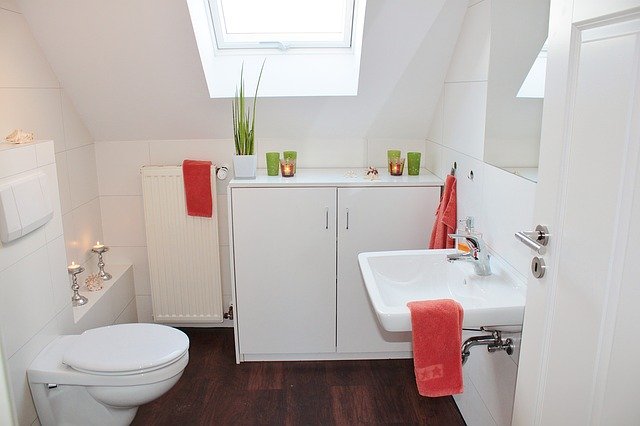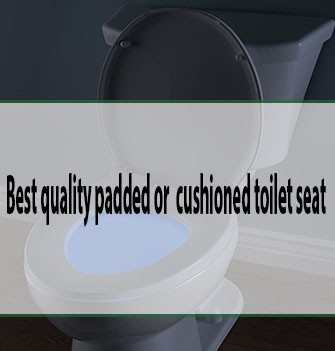Hey there! Ever been sitting in your living room or lying in bed, and you hear it? That faint, yet persistent hiss or trickle coming from the bathroom? It stops for a while, then starts again, seemingly all by itself. Yup, you’ve got a toilet that’s running intermittently. It’s like it’s having a secret conversation with your water pipes, and honestly, it’s pretty annoying!
But it’s more than just an irritating sound. That running water means water is constantly flowing from the tank into the bowl when it shouldn’t be. And while it might not be a full-blown, non-stop gush, even an intermittent leak can waste hundreds of gallons of water a month! That’s bad for the planet and, let’s be real, bad for your water bill. Nobody wants to pay for water they’re not even using.
The good news? This is one of the most common toilet problems, and most of the time, you absolutely do not need to call a plumber. Seriously. Fixing a toilet that runs intermittently is usually a super simple DIY job that you can knock out in under an hour with just a few basic tools. I’m going to walk you through exactly how to figure out what’s wrong and how to fix it yourself. Ready to silence the phantom flusher?
Table of Contents
🔍 Quick Diagnosis: Why Your Toilet Keeps Running Intermittently
Alright, before we grab any tools, let’s figure out why your toilet is doing this little dance. The intermittent running, sometimes called a “phantom flush,” almost always means water is slowly leaking from the tank into the bowl. When the water level in the tank drops too low because of this leak, the fill valve kicks in to refill it, making that running sound you hear. Once the tank is full again, the sound stops… until enough water leaks out to trigger the fill valve again.
So, what causes this slow leak? Here are the usual suspects:
- Faulty Flapper: This is the most common culprit! The flapper is that rubber or plastic stopper at the bottom of your tank that lifts when you flush. If it’s old, warped, cracked, or just not sitting right, it won’t create a good seal, letting water sneak into the bowl.
- Dirty or Misaligned Fill Valve: The fill valve is the part that brings water into the tank after you flush. Sometimes, mineral buildup or grit can prevent it from shutting off completely, or it might not be aligned properly, causing a slow leak or sensing the water level incorrectly.
- Worn-Out Flush Valve Seal: On some newer toilets, instead of a traditional flapper, there’s a flush valve with a rubber seal at the bottom. Like a flapper, this seal can get worn or dirty and fail to create a watertight connection.
- Water Level Too High: If the water level in your tank is set too high, it can constantly trickle down the overflow tube (that narrow pipe in the tank) into the bowl.
- Cracked Overflow Tube: Less common, but possible. If that overflow tube has a crack below the water line, water will leak into it and down into the bowl.
📌 Tip: Listen closely! The tell-tale sign of an intermittent running toilet is that short burst of running water (the tank refilling) happening randomly, often every few minutes or hours. This “phantom flush” is a dead giveaway that you have a slow leak from the tank into the bowl, and one of the above issues is usually the reason!
🧰 Tools & Materials You’ll Need
Let’s make life easier and gather what you need before you get your hands wet. Good news: you probably already have most of this stuff lying around!
- Adjustable Wrench – You might need this to loosen or tighten the water supply line. Some parts you can twist by hand, but a wrench makes it easier if they’re stuck.
- Rubber Gloves – This is a toilet we’re working on, after all. Gloves keep your hands dry and clean (and, let’s be honest, make it feel less gross).
- Sponge or Old Towel – To soak up any water that dribbles out during the repair.
- Replacement Flapper or Flush Valve Seal – If your flapper is worn out or warped, it needs replacing. Grab a universal one if you’re not sure which type to get—or take a quick photo of your old one and match it at the hardware store or online.
- White Vinegar + Cleaning Cloth – Great for scrubbing away that crusty mineral buildup inside your tank.
🛠️ Pro Tip: Want to make sure you’re getting the right parts? Check out these top-rated toilet repair kits and universal flappers on Amazon. Most of them include everything you need for quick fixes and cost way less than a plumber visit.
Step-by-Step DIY Fixes Based on the Cause
Okay, based on your quick diagnosis, let’s dive into the fixes. Start with the most likely cause (the flapper) and work your way down.
First Step for ANY Fix: Turn off the water! There’s a shut-off valve usually located on the wall near the base of the toilet. Turn it clockwise until it stops. Then, flush the toilet to empty the tank. Hold the handle down to get out as much water as possible.
A. Fixing a Worn-Out or Dirty Flapper
This is where I’d start because it’s the most common culprit and usually the easiest fix.
- Identify the Flapper: Look at the bottom of the tank. You’ll see a rubber or plastic piece (often red, black, or blue) covering the drain hole. That’s your flapper! It’s usually connected by two “ears” to the flush valve and a chain to the flush lever.
- Inspect the Flapper: Lift the flapper and look closely. Does it look old, cracked, warped, or stiff? Does it have mineral buildup on the edges where it seals? These are all signs it’s not sealing properly.
- Clean the Seal Area: Even if the flapper looks okay, the area where it sits (the flush valve seat) might be dirty. Use a sponge or cloth to wipe down the bottom edge of the tank drain where the flapper rests. You can use a little white vinegar to help remove mineral deposits.
- Check the Chain: Make sure the chain connecting the flapper to the flush lever isn’t too long (which can cause it to fall incorrectly) or too short (which can prevent it from sealing completely). There’s usually a bit of slack needed. Adjust it if necessary.
- Replace the Flapper (If Needed): If your flapper is old or damaged, it’s time for a new one.
- Unhook the chain from the flush lever.
- Gently detach the “ears” of the flapper from the posts on the flush valve.
- Take your new flapper ([Amazon Link to a Universal Flapper]) and attach its “ears” to the posts.
- Reconnect the chain to the flush lever, making sure there’s just a little bit of slack (about 1/2 inch is usually good).
- Turn the water back on and let the tank fill. Add a few drops of food coloring to the tank water. Wait about 15-20 minutes without flushing. If you see colored water in the bowl, you still have a leak, and it’s time to investigate other causes. If the bowl water is clear, you fixed it!
B. Adjusting or Replacing the Fill Valve
The fill valve is usually a vertical plastic column on the left side of the tank (when facing it).
- Check for Obstructions: Make sure the fill valve isn’t bumping against the tank walls or other components. Sometimes, a slight misalignment can cause issues.
- Clean the Fill Valve (If Possible): Some fill valves can be partially disassembled to clean out mineral deposits or debris that might be affecting the shut-off mechanism. Check your toilet’s manual or the fill valve manufacturer’s instructions.
- Replace the Fill Valve (If Needed): If the fill valve seems old, damaged, or cleaning/realigning doesn’t stop the running, it might need replacing.
- Turn off the water supply and flush the toilet to empty the tank.
- Disconnect the water supply line from the bottom of the fill valve (use your adjustable wrench if needed).
- Unscrew the large nut holding the fill valve to the bottom of the tank.
- Remove the old fill valve.
- Install the new fill valve ([Amazon Link to a Recommended Fill Valve]) following the manufacturer’s instructions. This usually involves inserting it into the hole, tightening the nut underneath the tank, and reconnecting the water supply line.
- Turn the water back on and check for leaks around the connections. Adjust the water level if necessary (see next step).
C. Correcting Water Level in the Tank
If the water level is too high, it constantly spills into the overflow tube.
- Locate the Water Level Mark: Most tanks have a mark inside indicating the correct water level. The water should be about 1/2 to 1 inch below the top of the overflow tube.
- Identify Your Float Type: There are typically two types of floats:
- Ballcock Float: An older style with a large ball attached to an arm. Bend the arm gently downwards to lower the water level, or upwards to raise it.
- Cylinder/Float Cup: A newer style that slides up and down the fill valve. Look for an adjustment clip or screw on the fill valve. Squeezing the clip or turning the screw allows you to slide the float up or down. Lower the float to lower the water level, and vice versa.
- Adjust the Water Level: Make small adjustments, then flush the toilet and let the tank refill to see the new water level. Repeat until the water is just below the overflow tube opening.
D. Inspecting the Flush Valve or Overflow Tube
These parts are part of the toilet itself, so fixing them is a bigger job, but inspecting is easy.
- Inspect the Flush Valve Seat: This is the surface at the bottom of the tank where the flapper or seal sits. Clean it thoroughly as described in the flapper section. Feel for any rough spots, chips, or cracks that might prevent a good seal.
- Inspect the Overflow Tube: This is the standpipe inside the tank, usually connected to the flush valve. Look very closely for any vertical cracks, especially towards the bottom. A cracked overflow tube below the waterline will cause a constant, unfixable leak into the bowl.
- When to Replace the Valve: If you find significant damage to the flush valve seat or a crack in the overflow tube itself (and it’s not just a removable plastic overflow tube), you’ll likely need to replace the entire flush valve assembly. This is a more involved DIY project, or you might decide it’s time to call a plumber.
Preventive Tips to Avoid Future Issues
Want to keep that toilet running only when you want it to? Here are some simple things you can do:
- Clean Tank Parts: Every few months, take off the tank lid and quickly check the flapper and fill valve. Wipe down the flush valve seat. This prevents mineral buildup that can cause leaks.
- Don’t Use Drop-In Bleach Tablets: Those blue tablets you drop in the tank might seem convenient for cleaning, but the chemicals can actually degrade the rubber and plastic parts (like your flapper and seals) over time, leading to leaks and other problems.
- Watch Your Water Bill: Keep an eye on your water usage. A sudden spike could be an early warning sign of a silent leak, including an intermittent one you haven’t even heard yet!
- Test for Leaks: Periodically do the food coloring test mentioned earlier (add a few drops to the tank, wait 15-20 mins without flushing; check the bowl for color).
When to Call a Plumber
While most intermittent running toilet issues are DIY friendly, there are times when it’s best to call in a pro:
- You’ve Tried Everything: If you’ve replaced the flapper and fill valve, checked the water level, and the toilet is still running intermittently.
- Cracked Tank or Bowl: Any visible cracks in the porcelain means it’s time for a replacement toilet, not just a repair part.
- Leaking from the Base: If water is leaking from the bottom of the toilet, it could be the wax seal, which is a more complex fix, or a sign of a bigger issue.
- You’re Not Comfortable: If you feel completely out of your depth or are worried about causing more damage, don’t hesitate to call a plumber. It’s better to pay for peace of mind than deal with a flooded bathroom!
Best Products for Toilet Repair
If you need replacement parts, shopping on Amazon is super convenient. Here are some types of products that are highly rated for fixing running toilets:
- Universal Toilet Flappers: These are designed to fit most standard toilets and are the most common replacement part needed for intermittent running.
- Adjustable Fill Valves: If your fill valve is the problem, an adjustable replacement allows you to easily set the water level.
- Complete Toilet Repair Kits: These kits often include a new flapper, fill valve, and tank-to-bowl gasket, basically replacing all the internal parts of the tank. This can be a good option if your toilet is older or you want to refresh everything at once.
FAQ – Toilet Running Troubleshooting
- Why does my toilet run for a few seconds every hour? This is the classic “phantom flush”! It means water is slowly leaking from the tank into the bowl, causing the tank to refill periodically when the water level drops too low. The most common cause is a faulty flapper.
- Can a running toilet increase my water bill? Absolutely! Even a slow, intermittent leak can waste hundreds or even thousands of gallons of water over a month, leading to a noticeable increase in your water bill. Fixing it saves you money.
- How much does it cost to fix a running toilet DIY vs plumber? Fixing it yourself by replacing a flapper or fill valve typically costs between $10 and $30 for the parts. Hiring a plumber can cost anywhere from $75 to $200 or more, depending on their rates and the complexity of the job. DIY is significantly cheaper for common issues.
Conclusion
See? That annoying running toilet doesn’t have to be a mystery or an expensive problem. Most of the time, it’s just a simple part like a flapper or fill valve that needs a little attention or replacement.
By taking a few minutes to diagnose the issue and following these simple DIY steps, you can easily silence that phantom flush, save water, lower your utility bills, and feel like a plumbing superhero!
So, don’t wait! Grab your gloves, head to the bathroom, and get ready to enjoy the sweet sound of silence (or at least, a quiet toilet!). And if you need any replacement parts, remember you can easily find them online using the product links mentioned above. You’ve got this!






